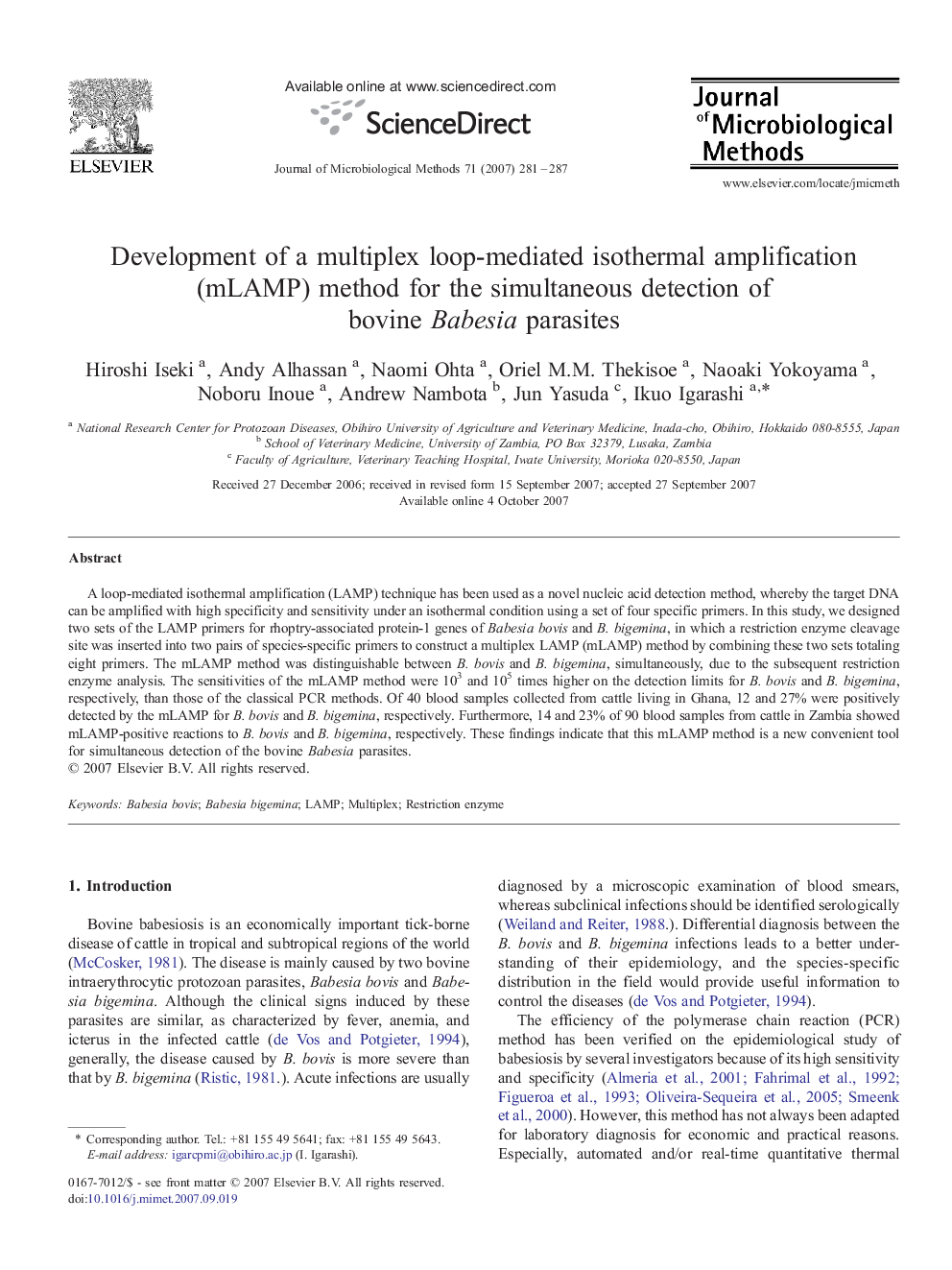| Article ID | Journal | Published Year | Pages | File Type |
|---|---|---|---|---|
| 2091068 | Journal of Microbiological Methods | 2007 | 7 Pages |
A loop-mediated isothermal amplification (LAMP) technique has been used as a novel nucleic acid detection method, whereby the target DNA can be amplified with high specificity and sensitivity under an isothermal condition using a set of four specific primers. In this study, we designed two sets of the LAMP primers for rhoptry-associated protein-1 genes of Babesia bovis and B. bigemina, in which a restriction enzyme cleavage site was inserted into two pairs of species-specific primers to construct a multiplex LAMP (mLAMP) method by combining these two sets totaling eight primers. The mLAMP method was distinguishable between B. bovis and B. bigemina, simultaneously, due to the subsequent restriction enzyme analysis. The sensitivities of the mLAMP method were 103 and 105 times higher on the detection limits for B. bovis and B. bigemina, respectively, than those of the classical PCR methods. Of 40 blood samples collected from cattle living in Ghana, 12 and 27% were positively detected by the mLAMP for B. bovis and B. bigemina, respectively. Furthermore, 14 and 23% of 90 blood samples from cattle in Zambia showed mLAMP-positive reactions to B. bovis and B. bigemina, respectively. These findings indicate that this mLAMP method is a new convenient tool for simultaneous detection of the bovine Babesia parasites.
